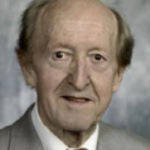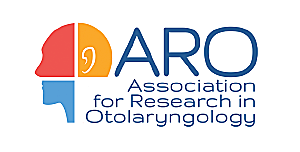
It is with tremendous sadness that we reflect upon the re- cent death of Aage Møller, beloved colleague, mentor and friend. Aage left us at the age of 90. Every person who ever met Aage, from members of his laboratory and faculty to countless colleagues around the world perceived Aage as a uniquely kind, honest, gen- erous, open-minded and thoughtful man: young at heart even at an advanced age. Always eager to learn and advance science, with a unique gift of simplifying difficult topics by integrating anatomy and physiology, and a wonderful capacity to detect signal in a noisy environment, to pick up new theories and translating them to the clinical realm. Aage was born in Denmark, trained at the Karolinska in Swe- den, spent some research time in Kenya, and later had two full academic careers, one in the neurosurgical department at the Uni- versity of Pittsburgh, and later, at the age when most people retire, he joined the University of Texas at Dallas, where he was still ac- tively teaching till a few months ago. Aage spent the years between 1956 and 1978 in Stockholm. Aage Møller initiated his studies on the middle ear and the acous- tic middle ear reflex in humans during 1956-1963 at the Speech Transmission laboratory at the Royal Institute of Technology in Stockholm, Sweden. In 1963 he moved to the Department of Phys- iology at the Karolinska Institute in Stockholm to pursue experi- mental studies on the middle ear reflex in rabbits. His time at the Karolinska Institute was very productive and he received his doc- torate in medical science in 1975 from the Karolinska Institute. He later studied the cochlea and showed proof that the cochlea in a living animal is much more frequency-selective for weak sounds than loud sounds. He then turned to studies of coding of complex sounds in the cochlear nucleus in studies on rats using standard neurophysiological recordings but later began using statistical sig- nal analysis methods.
As an example of Aage ´s broad interest in sensory physiology it is worth mentioning that he performed stud- ies on the insect eye during 1972. Aage performed experiments on the special organization of the cornea of the insect eye with anti- reflective properties. These studies all culminated in a spectacular experiment with microwaves and a meter-sized model of the in- sect’s eye that was placed on the roof of the Department of Physi- ology at the Karolinska Institute. Aage will be remembered as a ‘Great Man’, both in academia and as a human. His academic career needs no introduction, hav- ing published more than 200 scientific papers, more than 100 book chapters, more than 20 books as a single author, and edited among others the first ‘Textbook of Tinnitus’. However, the way he did it exemplifies his wonderful personality, kind yet firm, open-minded but no-nonsense, famous, yet humble. Aage was a man of dedica- tion, to the field of auditory neuroscience, to his students, not only in Dallas, but throughout the world. This dedication also led to a second typical characteristic of Aage: courage. In scientific terms he was unafraid to go beyond the well-trodden path. Aage was never satisfied with the status quo and was always pushing the limits of experimental possibilities. He worked on audiology, neu- roscience, pain, fear, autism and intraoperative neurophysiology. He advanced the concept of maladaptive plasticity as a cause for pain and tinnitus before that was en vogue. He was also one of first to endorse translational neuroscience, bridging the gap between basic neuroscience and clinicians. And a third important characteristic of Aage was his perseverance, always in a structured approach, one step at a time, but with focus and a vision. Cutting against the grain in science is not for the faint-hearted, and Aage—like many of us—had to overcome many rejected papers, grants, and proposals. However, this never deterred him. When he had trouble getting manuscripts accepted for publication because the journals were only interested in auditory research performed with pure tones, which had little translational value for clinicians, he founded a new journal in 1978, dedicated to translational ap- proaches of hearing: Hearing Research. His journal had to fill a gap. He was its chief editor for 27 years, read every single submission, and sometimes accepted manuscripts if one of the reviewers re- jected it, if he saw merit in the manuscript. Hearing Research is now a standard in the field of auditory (neuro)science.
Aage was more than a wonderful teacher, researcher, and jour- nal editor. His interest in humanity led to motivating politicians in preventing work-related noise trauma in the 1970s, long be- fore anybody became interested in it. He also published about the hidden dramas in the medical system, with the same goal: preven- tion of trauma, especially iatrogenic trauma. Many readers will know him for his dedication to the tinnitus field, which he has helped to establish from a neglected research domain to a somewhat accepted scientific field. He developed the concept of dysfunctional neuroplasticity as the cause of phantom sound generation and demonstrated that the clinical problem of tinnitus, which until then had been an enigma, can be approached by neuroscientific research. His inspirational guidance, paired with his unselfish help, his organizational and communicative capacity, and never-ending support brought many of us into the tinnitus field. When the Tinnitus Research Initiative was founded in 2006 with the goal to develop better treatments for people suffering from tinnitus, he was extremely supportive from the first moment and encouraged many of us –at that time young and unknown clinicians and researchers –to engage in this area. He taught us that a precondition for successful translational research is communication across disciplines and this motivated him to create the Textbook of Tinnitus. Until his death he served as the chair of the Board of Directors of the Tinnitus Research Initiative and also co-edited to the second edition of the Textbook of Tinnitus. Thus, Aage can truly be called A Father of Tinnitus Research, not only because of the scientific work he has performed, but because he has been a father and mentor to an entire generation of young tinnitus researchers. With Aage’s death, the tinnitus field loses a pioneer, a teacher, an inspiration, and a friend for many. We lost a wise and great man. If Aage were reading this obituary, he would be telling us that life must go on and that everything will be okay. He would also want us to concentrate on better understanding the biological ba- sis of tinnitus, so that more effective treatments can be developed. Aage was a person with a vision and mission: make the world a better place through science. We are all grateful and blessed by having known Aage.
Aage, you will be missed.
